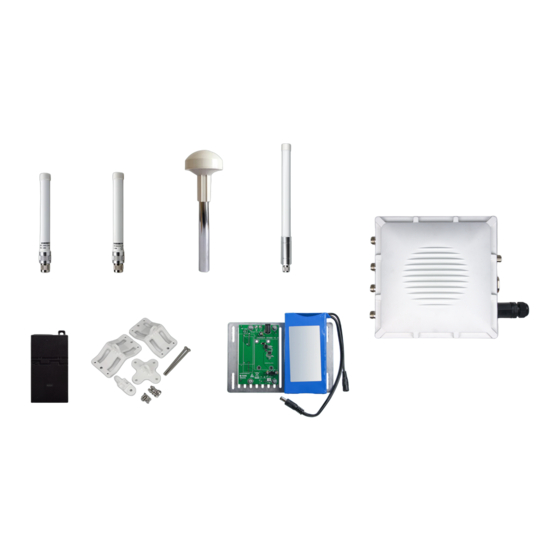
Table of Contents
Advertisement
Quick Links
Documentation Center
RAK7249 Quick Start Guide
Prerequisites
What Do You Need?
1. RAK7249 WisGate Edge Max
2. A Windows/Mac OS/Linux Computer
⚠
WARNING
The SIM card slot of the cellular versions is not hot-swappable. Make sure the gateway is switched off
before inserting or ejecting the SIM card.
What's Included in the Package?
NOTE
The included type and number of antennas and the Backup Battery Kit is optional, depending on the
purchased bundle.
Product Configuration
Gateway Installation Guide
For details about the interfaces and connectors of RAK7249 WisGate Edge Max Gateway enclosure, refer to the
Datasheet.
Assembly
1. Fix the support plate on the base with three M3*6 screws.
Figure 1: RAK7249 Package Contents
Advertisement
Table of Contents













Need help?
Do you have a question about the WisGate Edge Max and is the answer not in the manual?
Questions and answers